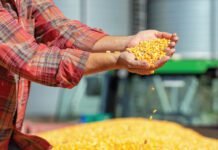Former pig farmers, whose herds were devastated by African swine fever, are now raising chickens
Pork production has plummeted and prices last month jumped by 110.2 per cent from a year earlier, driving the country’s consumer inflation rate to an eight-year high. The skyrocketing cost of China’s favourite meat has forced many people to turn to more affordable forms of protein like chicken.
National per capita consumption of poultry rose to 9kg in 2018 from 8kg in 2014, according to the National Bureau of Statistics. It is forecast to increase to 11.4kg per person by 2020, according to data from the China Chamber of Commerce in the Netherlands, with government data showing that annual poultry production is estimated to have jumped by more than 3 million tonnes this year.
But for many former pig farmers the pivot to rearing poultry has not proved as lucrative as first expected.
While government data showed the retail price for chicken increased by 23 per cent between June and November, and the price of eggs rose by 29 per cent over the same period, increased production from new farmers has driven producer prices to rock bottom. Though the farmers are suffering in silence while wholesalers are making huge profit.
China raises about half of the world’s pigs, and the spread of African swine fever has seen millions of animals killed across the country since the first outbreak in August last year.
China’s government has introduced a range of measures to help pig farmers deal with the effects of African swine fever, including subsidies, discounted loans, insurance for live pigs, as well as opening up land supply to help the hog population recover. But analysts say it will take years for the country to rebuild its stocks.
Source: Chinese media













